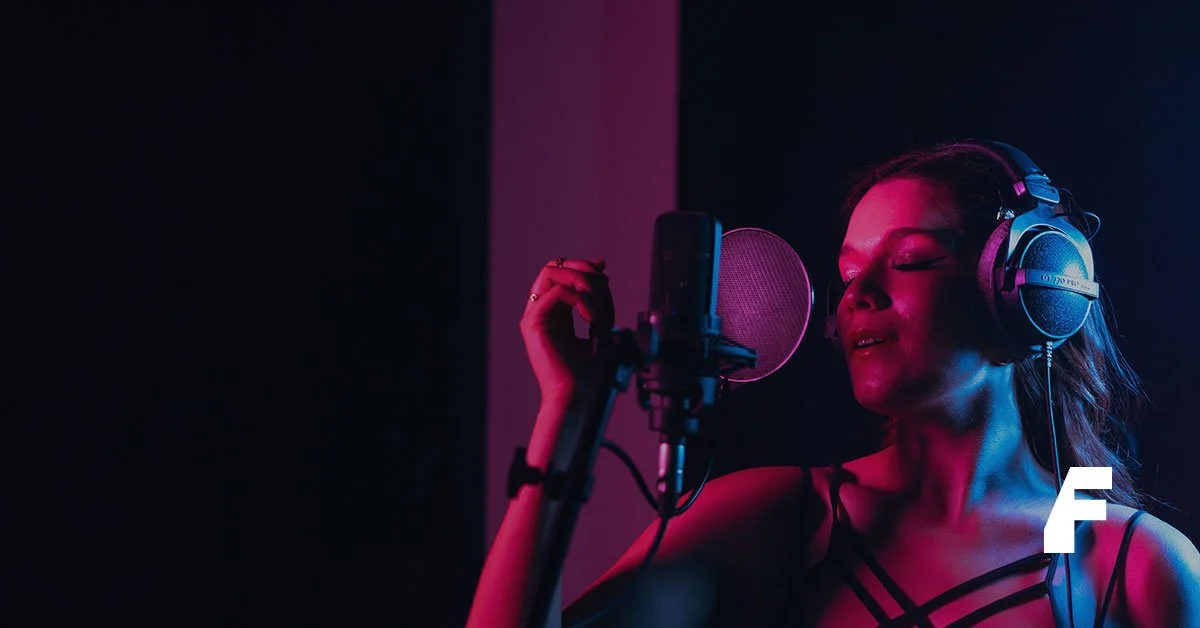Half of Every Video is Audio
Imagine, if you will, a young couple at the beach. The woman swims into the twilight night. With soothing acoustic guitar strumming in the background, we watch as she turns and waves to her boyfriend on the beach. It’s a beautiful, romantic, Instagram-worthy sunset scene.
Now swap that acoustic guitar for the bass-heavy tension of the famous JAWS soundtrack we all know: dah-dun, dah-dun. Suddenly you sense the impending danger. It’s no longer an enviable tranquil dip in the ocean - but rather an inevitable dip into tragedy. The viewer’s pulse is racing as the unsuspecting woman swims literally into the jaws of death. We wish she could hear the music so she could be warned to race back to shore, but her innocence only magnifies the tension.
These scenes are visually identical, yet the viewer experience is controlled not by a change of image or script but simply by a change in music. That is the power of the soundtrack.
If you think that this sound facet only applies to Hollywood productions and fiction films, you are mistaken. The power of the perfect music bed is felt just as forcefully in corporate videos and documentaries as in feature films. You don’t need a John Williams score to nail the right emotion. You only need to treat the audio with as much care and attention as the script and the camera work.
Many video production companies look at the music as the cherry on top, a little extra nudge to give a professional sheen. But by only thinking of it as background music, even within a corporate video, they are missing something crucial and will end up with yet another generic-feeling video that is sincerely a pale version of what it could be, with just a little more musical attention.
I would suggest instead that editors flip this process and approach music as an integral part of the entire edit. If you know how you want your audience to feel, try starting with the music and then see how the words and images bend themselves to the emotional quotient you are seeking. When you can give people the right feeling by using just images and music and no words, you are already winning. Every single frame of your video can be elevated by orchestrating the perfect dance between the images, the words, and the music.
One of our editors makes it a practice to find music that perfectly fits the sentiment sought, even when we’re not using music in the end edit, claiming that editing with such music playing influences the end product even when it is not an ingredient in the final dish. The music is the muse influencing the editing sentiment and style.
Hence, one skill set to consider with editors is if they are musicians. Some of our best editors are gifted rock stars (or, ahem, wannabes). They have rhythm, pitch, and a sense of dynamics and other elements in musical language. Good editors are also masters of a story arc, crafting any story most compellingly. But masterful editors sync the edit to the soundtrack - mapping the story to music that perfectly conveys the desired feeling for users - and powerfully steering that feeling throughout the video.
It should also be noted that proper sound recording on-set is a crucial and often overlooked aspect of production. Dedicated, live audio engineers are worth every penny. Voices recorded too low, captured with improper EQ, distracting background noises, and too much “room sound” or distortion are all common audio mishaps that will change the whole feeling of your piece. Audio recording is a subtle art — the less you notice, the more successful it is.
I had an experience years ago that underlined the truth in the power of audio. While speaking at a Wired Magazine conference north of San Francisco, the conference provided attendees with a day at Skywalker Studios, the legendary sound stage from which hundreds of films were scored. I sat in the middle of a live orchestra while they played three different scores synced with the last five minutes of the film played above their heads, where the main character sinks from his irreparably damaged boat. Sitting within an orchestra while watching the film to which it was scored was experienced enough. But each score created a very different feeling: one where it was unquestionable that the character died, one where he miraculously lived, and one where the answer was ambiguous — all with the same film footage and only the music score changed. The latter became the final soundtrack to the film — allowing every viewer to decide on the outcome.
Feeling inspired? Reach out and say [email protected].

